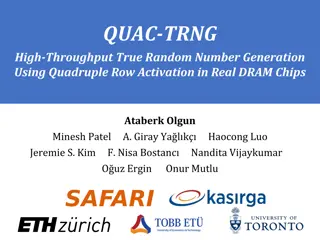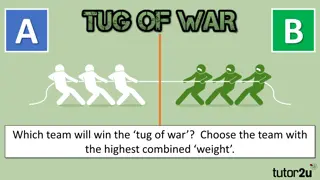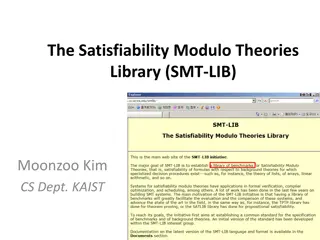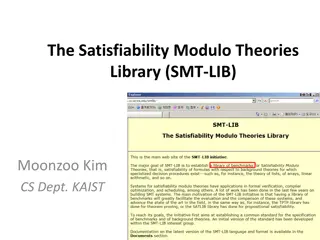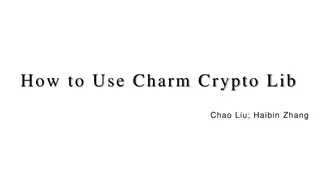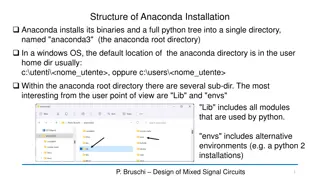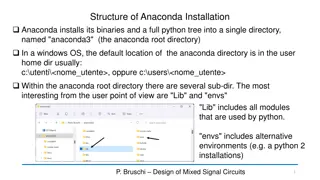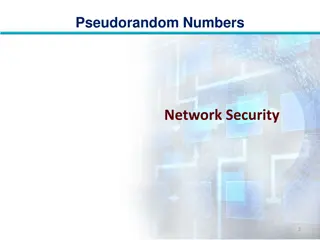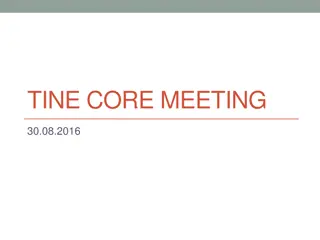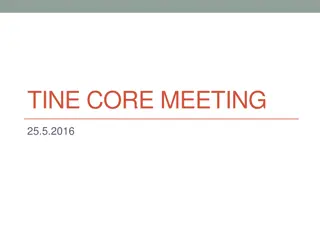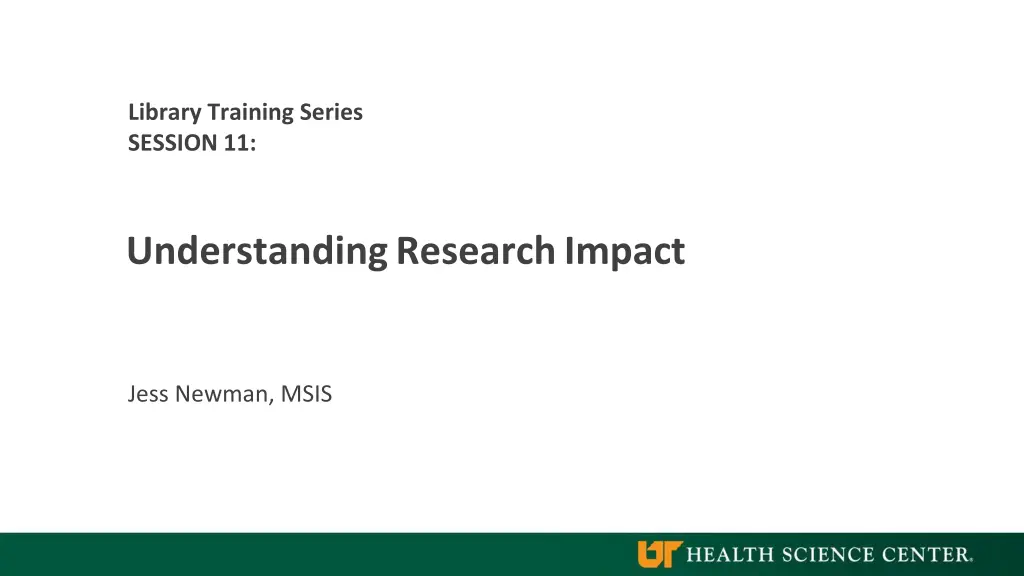
Understanding Research Impact Metrics
Learn how to identify examples, purposes, and limitations of common and alternative metrics, track and enhance researchers' visibility, and explore article-level impact assessment in the health sciences library with Jess Newman, MSIS.
Download Presentation

Please find below an Image/Link to download the presentation.
The content on the website is provided AS IS for your information and personal use only. It may not be sold, licensed, or shared on other websites without obtaining consent from the author. If you encounter any issues during the download, it is possible that the publisher has removed the file from their server.
You are allowed to download the files provided on this website for personal or commercial use, subject to the condition that they are used lawfully. All files are the property of their respective owners.
The content on the website is provided AS IS for your information and personal use only. It may not be sold, licensed, or shared on other websites without obtaining consent from the author.
E N D
Presentation Transcript
Library Training Series SESSION 11: UnderstandingResearchImpact Jess Newman, MSIS
Learning Objectives Identify examples, purposes, and limitations of both common and alternative metrics, and sources for those metrics Understand journal vs article vs author level metrics Choose and compile the correct metrics Track and enhance researchers visibility with online profiles and scholarly IDs Health Sciences Library
Publishing Pressures Health Sciences Library
Getting started What is your goal? Assessing a journal's quality or choosing a publication venue Evaluating an author or group or works Measuring the impact of a publication or other scholarly work Health Sciences Library
Metric Building Blocks: Citations & Online Engagement Health Sciences Library
Most metrics start with citations. Health Sciences Library
Article Level Metrics Common metrics to assess article level impact Health Sciences Library
Citation Counts A measure of the number of citations made to a work by other works. Simple Well recognized Counts will likely vary slightly between sources Often a significantly delay between publication and citations (lag) Health Sciences Library
Citation Counts A measure of the number of citations made to a work by other works. Advantages Disadvantages Established Slow to occur and thus disadvantage Well understood early career researchers Easily quantifiable Highly dependent on discipline Demonstrates academic engagement Do not demonstrate public or with your work* commercial impact *This engagement might not always be positive, see The Typically vary depending on source Citation Typing Ontology & Scite Health Sciences Library
Altmetrics are an *alternative* to traditional measures. Health Sciences Library
Altmetrics Typically online engagement with a work, including downloads, shares, Tweets, mentions, etc Sources: Can track wider variety of works, e.g. Altmetric (plugin and standalone videos, learning materials, patents, explorer) PlumX (plugin as seen on data sets Demonstrates engagement outside of Scopus & our Institutional academia, e.g. media, general public, Repository) working professionals ImpactStory May occur more rapidly Health Sciences Library
Altmetrics Online engagement with a work, including downloads, shares, Tweets, mentions, etc Advantages Disadvantages Can begin to be measured immediately Potentially gameable (e.g. bulk Not limited to traditional scholarly downloads from bots) output, may include other types of works Not all interaction is meaningful or May demonstrate impact outside of equally weighted (e.g. a click academia vs mention in policy documents) Compiles data from multiple sources Sentiment is unknown Health Sciences Library
Altmetric and PlumX Compiled measures of online attention surrounding your work Health Sciences Library
All following metrics are calculated from citations. Health Sciences Library
FCR (Field Citation Ratio) indicates the relative citation performance of a publication when compared to similarly-aged articles in its subject area Article level measure Benchmarking makes it easier to understand what your score means, and to compare across disciplines Uses FoR (fields of research) subject codes Source: Dimensions Health Sciences Library
FWCI (Field Weighted Citation Index) ratio of the total citations actually received by the denominator s output, and the total citations that would be expected based on the average of the subject field Article level measure (also calculated for authors in SciVal) Benchmarked A score higher than 1 indicates higher than average citation behavior Source: Scopus Health Sciences Library
Author Level Metrics Common metrics to assess an author or group of works Health Sciences Library
H-Index number of papers (h) that have received at least h citations An h of 15 means that an author has at least 15 publications that have been cited at least 15 times each. May vary depending on the source (coverage of journal titles, time span, etc.) Source: Scopusauthor search, Google Scholar, Publons, Publish or Perish Health Sciences Library
RCR (Relative Citation Ratio) A field- and time-normalized citation measure from the NIH Can be used for either article or author level impact. Normalization makes it easier to compare across domains. Benchmarked to 1.0. Only includes NIH publications (PubMed or PMC). Source: iCite Health Sciences Library
i10-Index Number of publications the researcher has authored that have at least 10 citations Created by Google Scholar, freely available Very simple measure Does not give extra credit to highly cited works Source: Google Scholar Health Sciences Library
Journal Level Metrics Common metrics to assess the quality or impact of a journal (formal body of published works) Health Sciences Library
JIF (Journal Impact Factor) Average of citation behavior over a 2 year period Widely recognized measure provided exclusively by the Web of Science Journal Citation Reports Created in 1955 by Eugene Garfield as a proxy for the importance or quality of a journal Has been criticized for being overly relied upon, misleading, and gameable Source: Web of Science (not available through UTHSC), but often located on journal webpages Health Sciences Library
CiteScore average of citation behavior over a 4 year period Scopus version of a JIF Highly comparable but longer evaluation period (2 year vs 4 year) Not normalized and should not be used to compare journals from different fields Health Sciences Library
CiteScore is similar to JIF Health Sciences Library
SJR Average number of weighted citations received in a year / number of documents in previous 3 years. Doesn't consider all citations of equal weight; the prestige of the citing journal is taken into account Inspired by Google page rankings algorithm and the logic that "not all citations are created equally Source: Scopus, SCImago Health Sciences Library
SNIP Journal's citation count per paper / citation potential in subject field. weights citations based on the number of citations in a field If there are fewer total citations in a research field, then citations are worth more in that field Source: Scopus Health Sciences Library
For more information and additional metrics, visit our Directory of Metrics Health Sciences Library
Tips for Responsible (and effective!) Evaluation Additional Reading: Responsible Research Evaluation Starts Here Health Sciences Library
1. Dont rely too heavily on any one measure Health Sciences Library
Author / Group of Works 2. Match the metric to the level of evaluation Article / Work Journal Health Sciences Library
Average(ish) citations in top papers by field 3. Normalize for your field, use weighted measures, and benchmark when possible https://www.sciencedirect.com/science/article/pii/S24058440 16322800 Health Sciences Library
Use Cases & Demos Health Sciences Library
Scopus Easy to use author profiles and article metrics, evaluate a group of authors using author search, evaluate and explore journal information Health Sciences Library
Dimensions Unique content and researcher profiles Health Sciences Library
iCite NIH supported tool for analyzing groups of works based on author name or PMID lists Health Sciences Library
Library Research Guide for Clinical Researchers https://libguides.uthsc.edu/clinicalre searchers

